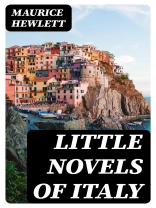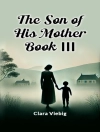In ‘Little Novels of Italy, ‘ Maurice Hewlett transcends the boundaries of traditional novella through a vivid tapestry of storytelling that encapsulates the essence of Italian culture and its landscape. With an exquisite literary style marked by lyrical prose and richly drawn characters, Hewlett deftly intertwines themes of love, loss, and the exploration of identity. Set against the backdrop of both historical and contemporary Italy, each tale reflects not only the charm of its setting but also an insightful examination of human relationships, revealing the deeper emotional currents that run beneath the surface of everyday life. Maurice Hewlett, a prominent figure of the early 20th century literary scene, was deeply influenced by his travels across Europe, which imbued him with a profound appreciation for diverse cultures. His background as a poet and novelist allows him to express the intricate nuances of Italian life with authenticity and elegance. The narratives in this collection draw from his own experiences, seamlessly merging observations with creative imagination, thus providing readers with a window into the Italian soul. I highly recommend ‘Little Novels of Italy’ to readers who seek both immersive storytelling and a rich cultural experience. Readers will find themselves enchanted by Hewlett’s evocative depictions and nuanced characterizations, making this work an essential addition to the library of anyone who appreciates literary explorations of both place and psyche.
A propos de l’auteur
Maurice Henry Hewlett (1861–1923), an English historical novelist, poet, and essayist, carved a distinctive niche in the literary world of the late 19th and early 20th centuries. Hewlett’s career transitioned from law to literature, and he gained recognition with his second book, ‘The Forest Lovers’ (1898). His passion for medievalism and Renaissance is vividly showcased in his works, where he combined his love for history and romanticism. ‘Little Novels of Italy, ‘ published in 1899, is a testament to his literary style that often interweaves historical settings with lyrical prose and rich characterizations. This collection of tales illuminates the Italian landscape, both geographically and culturally, reflecting Hewlett’s own fascination with the country and its art heritage. Although his popularity waned with the transition to modernist literature, Hewlett’s novels remain exemplars of their genre, eluding straightforward classification and offering insight into the romantic historicism that characterized much of the literary output of his era. His oeuvre encompasses a wide range of books that include ‘The Life and Death of Richard Yea-and-Nay’ (1900) and ‘The Queen’s Quair; or, The Six Years’ Tragedy’ (1904), where historical figures are often the central characters. Hewlett’s works, infusing antiquity with vitality, continue to be appreciated by those with a penchant for historical romances and the tapestry of the past.












